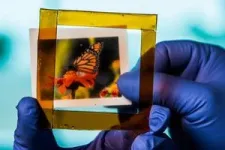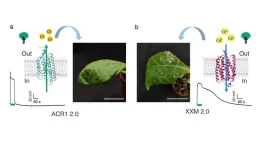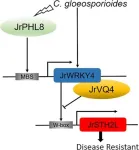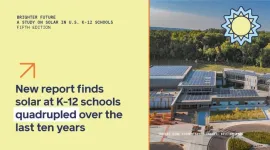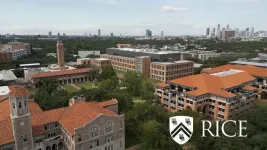(Press-News.org) A new discovery by researchers at the RIKEN Center for Biosystems Dynamics (BDR) in Japan upends decades of assumptions regarding DNA replication. Led by Ichiro Hiratani and colleagues, the experiments published August 28 in Nature show that DNA replication in early embryos is different from what past research has taught, and includes a period of instability that is prone to chromosomal copying errors. As failed pregnancies and developmental disorders are often related to chromosomal abnormalities the findings could impact the field of reproductive medicine, perhaps leading to improved methods of in vitro fertilization (IVF).
During embryogenesis, the initially fertilized egg divides, as do each new set of daughter cells. By the third day after fertilization, an embryo has undergone three divisions and contains 16 cells. Each cell division is accompanied by DNA replication, ensuring that each daughter cell contains a copy of the whole genome. In their new study, the team of RIKEN BDR researchers set out to characterize the nature of the DNA replication process in early-stage embryos. They used their homemade single-cell genomics technique called scRepli-seq and applied it to developing mouse embryos. With this technology, the team was able to take snapshots of single embryonic cell DNA at different times during the DNA-replication periods. What they found contradicted what scientists have assumed about DNA replication in embryos.
“We found multiple specialized types of DNA replication during early mouse embryogenesis, which no one has seen before,” says Hiratani. “In addition, we also found that at certain points, genomic DNA is temporarily unstable and chromosomal aberrations are elevated.”
Textbooks tell us that DNA doesn't replicate all at once. Instead, different regions of a chromosome are duplicated in a specific sequence. The team’s first discovery was that the replication-timing domains observed in mature cells do not exist until an embryo has 4 cells. This means that unlike any other cells in an eventual body, DNA is replicated uniformly, not sequentially, in 1- and 2-cell embryos.
Each time a part of a chromosome unwinds for replication, regions of DNA unzip forming a structure that looks like a fork in the road. For replication to proceed, the fork must move down the strand of DNA, rezipping copied regions and unzipping the next section. The team’s second discovery was that fork speed is much slower in the 1, 2, and 4-cell stages than after the 8-cell stage of embryogenesis. The 4-cell embryo can now be seen as a transitional stage during which uniform DNA replication becomes sequential, while still showing slow fork movement characteristic of 1- and 2-cell embryos. In contrast, 8-cell embryos are much more similar to mature cells, showing sequential replication and fast fork movement.
Errors in DNA replication in the first few days after fertilization often result in chromosome irregularities, such as extra copies, missing copies, breaks in copies, or incomplete copies. Some of these copying mistakes lead to miscarriage, while others lead to developmental disorders like Down Syndrome, also known as trisomy 21. The team’s third discovery was that the frequency of chromosomal copying errors was temporarily elevated in early-stage embryos, most commonly during the 4-cell stage.
The researchers again used scRepli-seq, this time for detecting chromosome copy number abnormalities. They found that very few errors occurred during the transition between 1- and 2-cell stages or between 8- and 16-cell stages. On the other hand, 13% of cells showed chromosomal abnormalities during the transition between the 4- and 8-cell stages, likely due to copying errors during the 4-cell stage. Further testing suggested that the copying errors at this stage were related to the slow-moving forks.
“Our findings lead to many new questions,” says Hiratani. “For example, are these series of phenomena evolutionarily conserved in other species, including human embryos? And what are the subsequent fates of cells with chromosomal aberrations?” In addition to guiding basic research in the future, this discovery could help fertilization clinics devise better strategies for minimizing the chromosomal abnormalities that are common in the first few days after fertilization.
END
Chromosome copying errors pinpointed in embryo development
2024-08-28
ELSE PRESS RELEASES FROM THIS DATE:
A cellular community in the brain drives Alzheimer’s disease
2024-08-28
NEW YORK, NY (Aug. 28, 2024)--An analysis of more than 1.6 million brain cells from older adults has captured the cellular changes that occur in the early stages of Alzheimer’s disease, potentially revealing new routes for preventing the most common cause of dementia in older individuals.
The study also identified a second community of cells that drives the older brain down a different path that does not lead to Alzheimer’s disease.
“Our study highlights that Alzheimer’s is a disease of many cells and their interactions, not just a single type of dysfunctional ...
Plant signaling pathways decoded
2024-08-28
When it comes to survival, plants have a huge disadvantage compared to many other living organisms: they cannot simply change their location if predators or pathogens attack them or the environmental conditions change to their disadvantage.
For this reason, plants have developed different strategies with which they react to such attacks. Such reactions are usually triggered by certain signals from the environment. As has long been known, the intracellular calcium concentration plays an important role in the processing of these signals.
However, in addition to changes in the cytoplasmic calcium level, changes in the cell's ...
Fighting fungal foes: Walnut's genetic armor against anthracnose revealed
2024-08-28
A pivotal study has pinpointed a gene module crucial for enhancing walnut trees' resistance to anthracnose, a widespread fungal disease threatening the walnut industry. The research reveals how the JrPHL8-JrWRKY4-JrSTH2L module regulates disease defense, opening up new opportunities for breeding resistant walnut varieties and promoting sustainable cultivation practices.
Anthracnose, caused by Colletotrichum gloeosporioides, poses a significant threat to walnut production, causing severe losses ...
Rice engineers develop AI system for real-time sensing of flooded roads
2024-08-28
Roadway-related incidents are a leading cause of flood fatalities nationwide, but limited flood-reporting tools make it difficult to evaluate road conditions in real time.
Existing tools — traffic cameras, water-level sensors and even social media data — can provide observations of flooding, but they are often not primarily designed for sensing flood conditions on roads and do not work in conjunction. A network of sensors could improve situational flood level awareness; however, they are expensive to operate at scale.
Engineers at Rice University have developed a possible solution to this problem: an automated data ...
Dr. David A. Schwartz receives 39th annual Alton Ochsner Award
2024-08-28
NEW ORLEANS – Ochsner Health has announced David A. Schwartz, MD, as the 2024 winner of the Alton Ochsner Award Relating Smoking and Disease. Dr. Schwartz is a Distinguished Professor of Medicine and Immunology and director of the Program to Advance Physician Scientists and Translational Research at University of Colorado’s Anschutz School of Medicine.
Dr. Schwartz won the 39th annual Alton Ochsner Award for his research on how genetic and environmental factors, including smoking, contribute to idiopathic pulmonary fibrosis (IPF). He found that ...
New data: Solar at K-12 schools quadrupled nationwide during the last ten years
2024-08-28
Charlottesville, VA — Schools across the country are rapidly switching to solar power to meet their energy needs while gaining significant cost-savings, boosting climate resilience, and supporting workforce development, according to a new report from clean energy nonprofit Generation180. Since the start of 2014, the amount of solar capacity installed at K-12 schools has more than quadrupled nationwide.
According to Brighter Future: A Study of Solar on K-12 Schools, 5th edition, over 6.2 million U.S. K-12 students– or more than one in nine students – now attend a school that utilizes solar power. In 2022-2023, over 800 schools added solar arrays, which is enough ...
Thermochromic material could make indoor temperature control more energy-efficient
2024-08-28
HOUSTON – (Aug. 28, 2024) – Rice University researchers have developed a smart material that adjusts its transparency with changes in temperature, outperforming similar materials in terms of durability, transparency and responsiveness. The new polymer blend could significantly enhance energy efficiency for indoor space cooling, according to a new study published in Joule.
Cooling off can be a matter of life or death, but air conditioning ⎯ when and if available ⎯ already accounts for 7% of the world’s energy use and 3% of carbon emissions. With temperatures hitting record ...
Damon Runyon Cancer Research Foundation awards $4.8 million to exceptional early-career scientists
2024-08-28
The Damon Runyon Cancer Research Foundation has named 16 new Damon Runyon Fellows, exceptional postdoctoral scientists conducting basic and translational cancer research in the laboratories of leading senior investigators. This prestigious Fellowship encourages the nation's most promising young scientists to pursue careers in cancer research by providing them with independent funding ($300,000 total) to investigate cancer causes, mechanisms, therapies, and prevention.
“What is so exciting—and so challenging—about being a postdoc is that you’re called to take what you know and apply ...
Primary care providers urged to assist patients who engage in emotional eating
2024-08-28
August 28, 2024 — Primary care providers are well positioned to address emotional eating because of their long-term relationships with patients, noted Jana DeSimone Wozniak, PhD and Hsiang Huang, MD, MPH, of Harvard Medical School and Cambridge Health Alliance in Cambridge, Massachusetts. According to their article published in Harvard Review of Psychiatry, part of the Lippincott portfolio from Wolters Kluwer, emotional eating is associated with myriad health problems, including the experience of ...
Half of Uber, Lyft trips replace more sustainable options
2024-08-28
More than 50% of ride-hailing trips taken by surveyed riders in California replaced more sustainable forms of transportation — such as walking, cycling, carpooling, and public transit — or created new vehicle miles, according to a study from the University of California, Davis Institute of Transportation Studies.
The study was conducted to help guide development of the Clean Miles Standard, a state regulation designed by the California Air Resources Board to reduce the greenhouse gas emissions from ride-hailing services.
Published in Transportation Research ...


